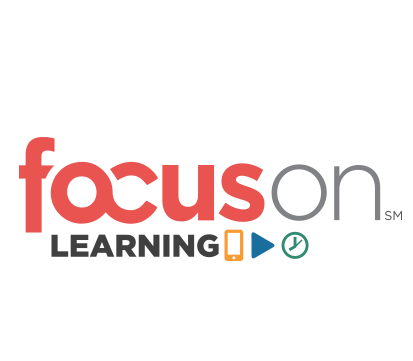FocusOn Learning Concurrent Sessions
You’ll be able to learn from industry leaders and peers sharing case studies, examples, and best practices that will help you harness the opportunities presented by mobile, video, and performance support technologies. You’ll find sessions targeting management & strategy, design, and development.
Find sessions on topics like these:
Specialized Focuses
In addition to the great tracks at FocusOn Learning Conference & Expo, there are a number of specialized sessions curated to help you put your skills into practice immediately.

Bring Your Own Laptop® sessions ensure that you receive in-depth, hands-on training and enable you to follow along with the instructor step-by-step.

If you’re new to mobile learning, the Mobile Foundations program offers you a set of carefully selected sessions that progress through the key areas you need to understand before launching your own mLearning effort.

If you’re new to video learning, the Video Foundations program offers you a set of carefully selected sessions that progress through the key areas you need to understand in order to harness the potential of video for learning.
Filter By:
Sessions in Block 2
Some research finds that customers who watch videos are 85 percent more likely to purchase. In addition, when leveraged appropriately, people may learn faster with video. The challenge today, then, is to leverage this information in a way that maximizes the impact of eLearning to increase knowledge and improve skills.
Read MoreCamtasia is a powerful tool for capturing and publishing conceptual videos and procedural demonstrations. But without some guidelines and best practices, it’s all too easy to spend days or weeks creating an ineffective video that is of little use to your audience. Not to mention that your organization increasingly expects your team to build more videos in half the time.
Read MoreInterviewing is a common way to gather information and a widely used approach in learning and development, HR, and marketing research. Capturing this information on video for analysis and reuse is a good way to extend the life of captured content. However, many people don’t know what makes one interview more effective than another in what they capture and the questions being asked.
Read MoreLearning organizations jump feet first into emerging trends without the right people, in the right seats, on the bus. The result of this approach is waste. Video production requirements go beyond the basic understanding of consumer electronics and, within the intersection of learning and development, can result in a considerable learning curve for quality production outcomes.
Read MoreSubject matter experts (SMEs) have expert knowledge to share. For rapid development situations or just-in-time training, SMEs can contribute good, solid content videos that can be shared with learners—and they can create the videos when they have the time or when a situation arises that would be a great video example, such as demonstrating a process or recalling a dangerous situation.
Read MorePractice makes perfect. Few would argue with that statement, but how do you provide enough time for ongoing practice and meaningful feedback with time-crunched employees?
Read MoreThe use of online video has become an essential part of teaching and learning. At the same time, it is challenging to provide accessible video accommodations for audiences across platforms and languages. Google thinks that all video material should be universally accessible—why not caption?
Read More209 Blending xAPI Analytics, DITA, and BPM for Next-gen Performance Support
Concurrent Session
Organizations transforming their businesses for new digital platforms and marketplaces need to make such transition as effective and painless as possible. During the rollout of new software platforms, companies need to continuously monitor the impact that new digital procedures and processes are having on workforce acceptance and customers’ engagement. More effective and intelligent solutions are needed to make companies cross the digital chasm—without falling into it.
Read MoreJuggling the related-but-different needs for effective formal learning and informal performance support can be daunting. So how do you keep your project from falling short in delivering client needs on time and within budget? How do you adjust when client needs are often changing? Agile provides a framework for adapting to change as it happens and working with the client to deliver the content most needed by learners.
Read MoreBusiness leaders often request training when there are better options available. Even when they do need “courses,” it’s often only to check off a box. In these situations, you have a responsibility to validate that creating a course is the most effective and efficient approach. Even when courses are appropriate, they’re rarely enough on their own to drive the change organizations need.
Read More212 Delivering the Goods: Developing a Performance Support Proof of Concept
Concurrent Session
As a performance support professional, you “get it,” but what if your leadership doesn’t? How do you prove that PS is the way to address a business issue and move your organization toward innovation? This session will review a step-by-step framework for developing a proof of concept and demonstrate several budget-friendly tools you can use to make PS come alive.
Read MoreWhen investing in technologies and applications to enable effective workforce performance support, who is buying? Who is investing time? Who manages them? Who creates the assets? Who deploys the assets? Who are the beneficiaries?
Read More
























